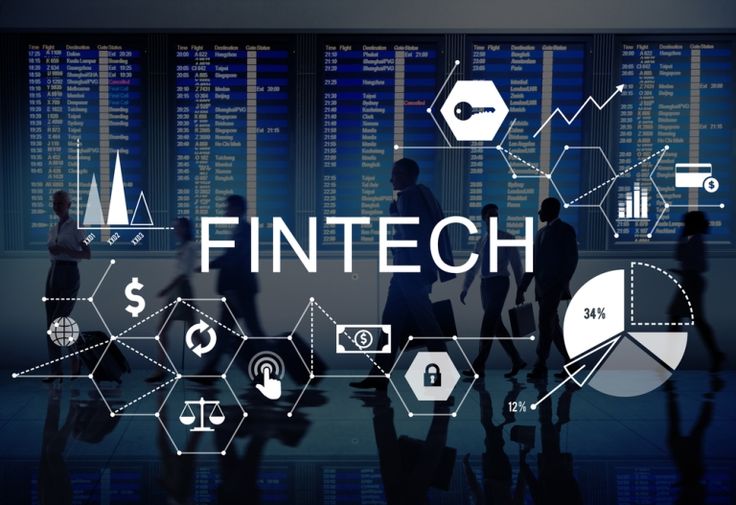Table of Contents
Fintech Crypto-currencies, short for financial technology, is a rapidly evolving sector that leverages innovative technologies to transform traditional banking and financial services. This industry encompasses a wide range of applications, from mobile banking and contactless payments to cryptocurrency and blockchain. The innovative solutions in this industry are technology driven, digitally focused, and often disruptive to traditional financial services. Examples include contactless payments, peer-to-peer payments, mobile banking, budgeting apps, robo-advisors, as well as blockchain and cryptocurrency.
Each section of the guide will begin with a concise overview, followed by links to resources such as reports, books, and external resources. To facilitate further research there are sections on cryptocurrency and block chain technology, advisory management consulting firms, trade associations, financial regulatory firms, related print resources, subscription databases, and subject headings. By providing these resources, we aim to equip you with the tools to stay informed and up-to-date on the latest FinTech developments, including regulatory and legislative considerations and assessments of broader systemic impacts on the U.S. financial system.

Fintech Crypto-currencies and decentralized finance:
Fintech Crypto-currencies have penetrated all areas of the financial system and have improved financial inclusion in the last decade. In this paper, we review the recent literature on fintech cryptocurrencies, stablecoins, and central bank digital currencies (CBDCs). There are important implications from the rise of fintech and the introduction of stablecoins and CBDC in recent years.
We provide an overview of China’s experience in fintech, focusing on payments, digital banking, fintech lending, and the recent progress on its CBDC pilots (e-CNY). We also discuss important considerations in designing effective cryptocurrency regulations. Cryptocurrency regulations could promote growth of innovations through enhanced public confidence in this market. The e-CNY could become mainstream in the global market through effective regulations which provide incentives and protection to market participants. A key factor to success for digital currencies has been their widespread adoption. If the Chinese e-CNY were to become a mainstream currency, the introduction of CBDC could potentially offer solutions to existing problems inherent in the traditional financial systems.
Financial technology (fintech) and decentralized finance (DeFi) have penetrated all areas of the financial system and improved financial inclusion in the last decade. Traditional financial institutions have been disrupted and continued to face increasing risk that banking, investing, and payment processing could become decentralized, requiring no intermediation. A broad range of new innovations in financial products and services (real-time payments, online lending, and various financial services through mobile phones) have seen explosive growth. The digital transformation during the pandemic has expedited the process to reduce frictions in the financial and payment systems. China has been one of the few countries in the world that experienced very fast growth in fintech in the last decade.

The Chinese economy has been performing extremely well, and it has become the largest economy in the world in terms of purchasing power parity (PPP). However, its financial system has been relatively small compared to the size of its economy. Arguably, the allocational efficiency and stability of the global financial system could potentially be improved if all countries’ financial systems were to become more balanced and reflect the sizes of the countries’ economies. If the goals are for the Chinese currency Rmb to become much more important for international trade, cross-border lending, and central bank reserves, then the Chinese financial system will need to mature.
China has a unique financial system that is “bank-centered.” Previous research has documented how the Chinese economy has been able to achieve such growth without having a well-developed financial system (Allen et al., 2005). China’s financial system has been dominated by a state-owned banking sector, which was designed to support the traditional growth model, led by large-scale capital investments as well as labor-intensive and export-oriented industries (Song et al., 2011).
This economic growth model is no longer sustainable given the rapidly advancing technology in both the financial and real sectors and the new fintech innovations around the globe. China’s new economic growth model is driven by domestic consumption and new high-tech innovations. A more efficient way to finance these new industries has been through stock markets and an alternative financial sector (such as fintech), rather than traditional bank loans. The Chinese stock market has seen explosive growth since its launch in the early 1990 s, but it has been underperforming in terms of returns to shareholders (Allen et al., 2021, Allen et al., 2021).
In addition to the traditional banking sector and the capital market, fintech firms have emerged to fill the credit gaps faced by small- and medium-enterprises (SMEs) as well as Chinese consumers. A new revolution in digital payments has also emerged – led by big Chinese fintech firms such as Ant Group and Tencent, where big data and more complex technology have been utilized in the financial services sector in China. Chinese fintech firms became some of the largest firms in the world with the largest market share in fintech and bigtech credit (Cornelli et al., 2020).
Fintech Crypto represents an opportunity for China’s financial system and others to transform. A large number of cryptocurrencies have been created globally to facilitate faster payments and improve financial inclusion. Plans by the People’s Bank of China (PBOC) for introducing a central bank digital currency (CBDC) represent an important step that in the long run can improve its international role and help transform the international economic order. In September 2017, the Chinese government banned initial coin offerings (ICOs) to protect investors and to curb inappropriate financial arbitrage.
More recently, in September 2021, the Chinese government declared all private crypto-related transactions illegal, citing concerns about speculative investments, extreme price volatility, gambling fraud, and money laundering. Alongside the ban on all ICOs and private crypto transactions, the PBOC was the first central bank that announced an intention to launch a CBDC, and it has made a significant progress in implementing its CBDC, the e-CNY, which is the digital version of the fiat currency issued by the PBOC.
we discuss the recent development of fintech in China, focusing on digital banking, fintech credit, real-time payments, and recent progress with the Chinese e-CNY and its implications for the development of the Chinese financial system and economy. The remainder of the paper is organized as follows. Section 2 discusses China’s experience in fintech/bigtech credit and digital banking, along with the related recent literature. Section 3 presents a discussion of the (recent) literature related to cryptocurrencies, stablecoins, and CBDC, and reviews China’s progress with its e-CNY. Section 4 discusses recent regulatory development related to cryptocurrencies and stablecoins in China, Europe, and the United States. Section 5 provides concluding remarks.
In this paper, we discuss the recent development of fintech in China, focusing on digital banking, fintech credit, real-time payments, and recent progress with the Chinese e-CNY and its implications for the development of the Chinese financial system and economy. The remainder of the paper is organized as follows. Section 2 discusses China’s experience in fintech/bigtech credit and digital banking, along with the related recent literature. Section 3 presents a discussion of the (recent) literature related to cryptocurrencies, stablecoins, and CBDC, and reviews China’s progress with its e-CNY. Section 4 discusses recent regulatory development related to cryptocurrencies and stablecoins in China, Europe, and the United States. Section 5 provides concluding remarks.
Alternative Data, Credit Scoring, and Fintech Credit
Along with the use of more complex algorithms used in credit scoring, more and better data have played a key role in making credit scoring more accurate and more forward-looking. In addition to using the traditional credit history and other financial and accounting data (hard information) related to credit performance, today’s credit scoring also relies on alternative data, including a large amount of unstructured data (soft information), based on machine learning and AI modeling.
Fintech Crypto currencies and Stablecoins
Recent years have seen exponential growth in crypto-assets as a new form of innovation in payments, investments, and wealth management. Cryptocurrencies are built on a blockchain, which is an open, distributed ledger technology that can record transactions between two parties efficiently and in a verifiable and permanent way.
Regulation of Cryptocurrencies and stablecoins: China Compared to Other Countries
Fintech Crypto currencies and digital assets have grown exponentially and become increasingly complex in recent years. Despite their dramatic growth, volatility, and evolving technologies, cryptocurrency regulations have been slow to catch up with the pace of the market. In China, the PBOC announced in September 2021 that all the activities related to cryptocurrencies and stablecoins are illegal. Similarly, Russia’s central bank announced in January 2022 that all activities.
Concluding Remarks
Fintech and decentralized finance (DeFi) have penetrated all areas of the financial system, disrupted traditional financial firms, and reduced frictions and opacity in payments and lending. The recent growth in fintech and DeFi has also improved financial inclusion around the globe, especially in countries that did not previously have a well-established payment system, such as India, China, and Kenya. Traditional financial systems face the problems of centralized control, high costs, limited.
21st Century FinTech
21st century FinTech products are considered disruptive innovations. These products leverage digital technology and consumer data, using both data aggregation and advanced data analytics to create entirely new financial services products. These products are being developed by FinTech and eCommerce companies as well as financial institutions, including banks. Some examples of these products are outlined below.

Big Data
Big data is being used in the financial services and insurance industries. In financial services, big data enhances the digital customer service experience, assists with fraud detection, enhances market analysis, provide predictive analytics that go into risk management strategies including credit decisions, and assists in developing and marketing new financial products.
The insurance industry is undergoing a digital revolution, with big data and telematics transforming how risks are assessed, and policies are priced. While this offers benefits like personalized coverage and potential cost savings, it also raises significant privacy concerns and the potential for discrimination. Insurers are increasingly collecting and analyzing vast amounts of personal data, from driving habits to social media activity, often without explicit consent. This raises the possibility that individuals could be unfairly discriminated against based on their data profile, leading to higher premiums or denied coverage. As the industry continues to evolve, it’s crucial to strike a balance between innovation and individual rights, ensuring that data is used responsibly and ethically, with safeguards in place to protect against bias and discrimination.
Algorithms, Machine Learning, Digital Footprint, and Alternative Data
Many financial services products now use algorithms. An increasingly common use of algorithms is algorithmic credit scoring. An algorithmic credit score collects a customer’s digital footprint and pairs it with traditional credit scores to create an enhanced credit score for approving borrowers. Banks and other lenders are increasingly turning to additional, unstructured, and semi-structured data sources. Those sources are a combination of social media activity, mobile phone use, online browsing, email receipts, text message activity, and geotrackers. Together they capture a more nuanced view of creditworthiness, and improve the rating accuracy of loans.
Applying machine learning algorithms to the collection of data enables an assessment of qualitative factors such as purchasing behavior and willingness to pay. Traditionally, banks and other lenders have relied entirely on credit bureau scores to determine a person’s creditworthiness. If a potential borrower had never used credit, they would not have a credit bureau score and most likely would be unable to obtain credit and build a credit history. By pairing alternative data sources and machine learning algorithms, lenders are better able to assess a customer’s ability and willingness to repay, and make better credit decisions than previously possible.

Behavioral Biometrics
Fingerprint and iris scans are static biometric security devices that have been in use for several years. Behavioral biometrics are a new security device; they rely on the user’s behavior. Motions such as how hard the user strikes the keys, the angle their finger swipes the touchscreen, or a particular typing rhythm all create a user identity. Using machine learning algorithms, behavioral biometrics builds a unique picture of an individual user. The end results is better fraud identification, particularly for mobile payment authentication.
RiskTech and RegTech
Risktech refers to the application of technology to manage various types of risks within financial institutions. These risks can include credit risk, market risk, operational risk, and regulatory risk. By automating aspects of risk management, RiskTech allows financial institutions to make informed decisions, reduce costs, and improve efficiency.
Regtech, short for regulatory technology, focuses on using technology to enhance compliance with regulatory requirements.
As financial regulations become increasingly complex, these solutions help financial institutions streamline their compliance processes, reduce costs, and minimize the risk of regulatory penalties. Regtech often involves the use of automation, data analytics, and artificial intelligence to monitor regulatory changes, automate reporting, and identify potential compliance gaps.
Risktech and Regtech are essential tools for fintech companies operating in a complex and evolving regulatory environment. By embracing these technologies, fintech companies can mitigate risks, enhance compliance, and drive innovation.





